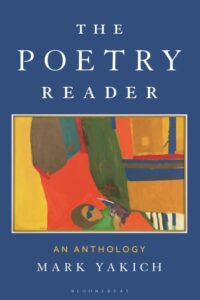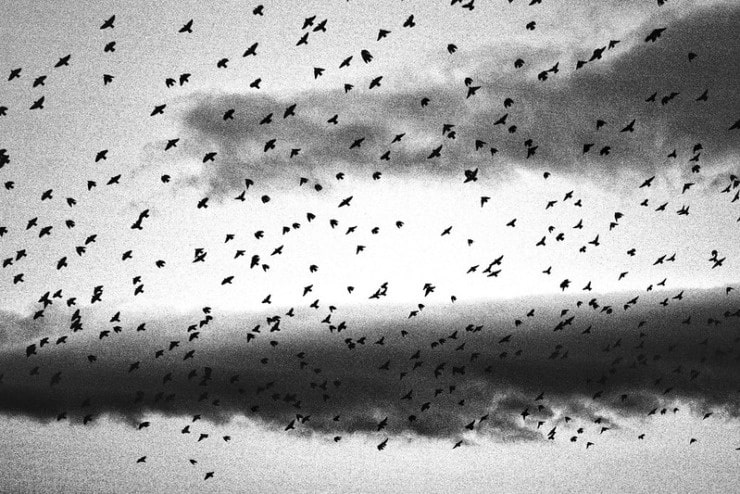
Mark Yakich has assembled an anthology about poetry, and it works
Most poetry anthologies follow one of several standard templates. They may be chronological, or the subset of poetry by century. They may be selections of contemporary poets, or poems by nationality. Some anthologies focus on a single theme, like T.S. Poetry’s own Earth Song.
Mark Yakich, a professor of English at Loyola University in New Orleans, has taken the idea of thematic anthology an academic step further. With The Poetry Reader: An Anthology, he’s assembled an anthology of two broad poetic themes, reading and writing. It’s an eclectic but purposeful gathering of poets from across the world and across the centuries, using their selected poems to show how to read poetry and how to write it.
Yakich recognizes something very fundamental about poetry: when you read a poem, you become a poetry reader. And that means you become the thing you’re reading. And the idea for The Poetry Reader originated, he says from “disappointment with nearly all those tomes I was taught from and have tried to use in my twenty-five years of teaching poetry reading and writing.”

If you want to read a poem about the purpose of poetry, see Ars Poetica by Archibald MacLeish. To understand pattern and variation, there’s The Tyger by William Blake and “One Art” by Elizabeth Bishop. For rhythm, try Dulce et Decorum Est by Wilfred Owen, one of my own personal favorite poems. For ambiguity, you can read John Ashbery’s Paradoxes and Oxymorons. The section on reading poetry has 31 sub-categories, each with multiple examples.
For writing poetry, Yakich has 22 sub-categories, a few with a single poem as illustration but most with multiple examples. You have The Fish” by Marianne Moore for form, “This Be the Verse by Philip Larkin for identity, Digging by Seamus Heaney for memory, and Dedication by Czelaw Milosz for collections.

Mark Yakich
I didn’t expect to enjoy a textbook as much as I’ve enjoyed reading, and re-reading, this one.
Yakich received a B.A. degree from Illinois Wesleyan University, an M.S. degree from Indiana University, an MFA Arts degree from the University of Memphis, and a Ph.D. degree from Florida State University. He has published four poetry collections: Unrelated Individuals Forming a Group Waiting to Cross (2004); The Making of Collateral Beauty (2006); The Importance of Peeling Potatoes in the Ukraine (2008); and A Meaning for Wife (2011). He is also a co-editor of Airplane Reading, an online journal of storytelling focused on the experience of flight.
Whether you’re walking into a classroom to learn to read and write poetry, or whether you’re seeing in your own private space to home and simply want to read a good anthology of poetry, The Poetry Reader is a hard one to beat.
Related:
Poetry: A Survivor’s Guide by Mark Yakich
Photo by Martin Fisch, Creative Commons, via Flickr. Post by Glynn Young
How to Read a Poem uses images like the mouse, the hive, the switch (from the Billy Collins poem)—to guide readers into new ways of understanding poems. Anthology included.
“I require all our incoming poetry students—in the MFA I direct—to buy and read this book.”
—Jeanetta Calhoun Mish
- “Your Accent! You Can’t Be from New Orleans!” - October 9, 2025
- Poets and Poems: Donna Vorreyer and “Unrivered” - October 7, 2025
- Poet Sidney Lanier and the Lost Cause - October 2, 2025


Leave a Reply